10 Financial Things To Do At The Beginning Of The Year

Okay, let’s be real for a second. January rolls around, and suddenly everyone’s talking about “new year, new me” while clutching their overpriced gym memberships and promising to meal prep every Sunday.
But here’s what actually matters: your wallet. Because honestly? Your bank account doesn’t care about your New Year’s resolutions unless you’re actually doing something smart with your money.
I get it. Last year might’ve been rough financially. Maybe you impulse-bought things you didn’t need, ignored your credit card statements, or watched your savings account gather dust (or worse, go backwards). But guess what? You’ve got 365 fresh days ahead to flip the script.
The financial things to do at the beginning of the year aren’t rocket science, but they do require some intention. Think of January as your financial reset button.
The decisions you make right now will either set you up for success or leave you scrambling come December. So let’s chat about the money moves that’ll actually make a difference. No fluff, no boring finance-bro talk. Just real, actionable steps you can start today.
1. Set A Savings Goal That Actually Motivates You
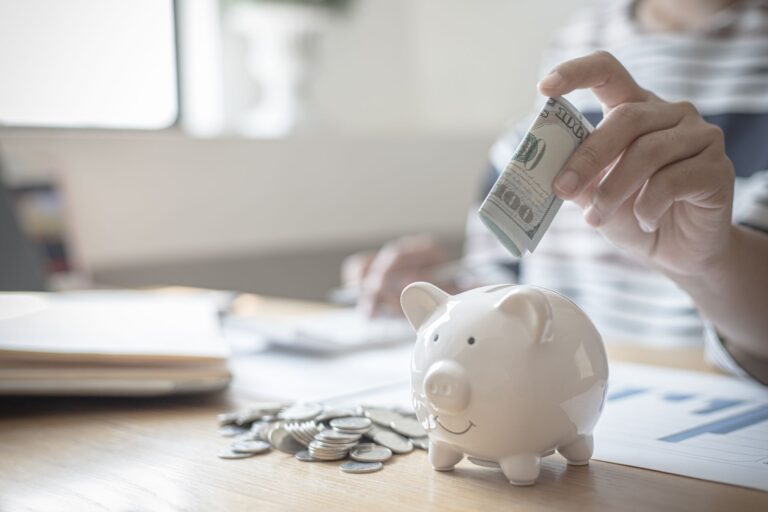
Here’s the thing about saving money: if you don’t have a reason, you won’t do it. It’s like trying to run a marathon without knowing where the finish line is. Pointless and exhausting, right?
Setting a savings goal early in the year is one of those financial things to do at the beginning of the year that sounds obvious but most people skip. They think, “Oh, I’ll just save whatever’s left at the end of the month.” Spoiler alert: there’s never anything left.
When you set a clear target, something magical happens. Your brain actually gets on board. Whether you’re saving for a vacation, a down payment on a house, or just a solid emergency fund, having that number in mind makes every spending decision easier.
You start asking yourself, “Do I really need this, or am I just bored scrolling through Amazon at midnight?”
Why Timing Matters
Starting your savings plan in January gives you the full year to build momentum. Compound interest (yes, even the tiny amount you get in a high-yield savings account) works better when it has more time to do its thing. Even if you’re only stashing away $50 a week, that’s over $2,600 by year-end. Not bad for skipping a few takeout orders, right?
Plus, when you factor savings into your budget from day one, it becomes non-negotiable. It’s not leftover money anymore. It’s a bill you pay to your future self.
What Should You Save For?
If you’re stuck on what to save for, here are some ideas that actually matter:
- Emergency fund: Aim for 3-6 months of living expenses (more on this later)
- Major purchase: Car, home, wedding, whatever big thing is on your radar
- Vacation fund: Because life’s too short to never leave your zip code
- Retirement boost: Future you will send thank-you notes
- Debt payoff fund: Yes, this counts as savings because you’re saving on interest
Pick one or two that resonate with you. Write them down. Put the number somewhere you’ll see it daily. Make it real.
2. Find An Extra Income Stream

Let’s talk about something nobody wants to admit: most of us need more money coming in. Not because we’re bad with money, but because costs keep rising while paychecks stay suspiciously flat.
Finding an additional income source is hands-down one of the smartest financial things to do at the beginning of the year.
I’m not saying you need to become a hustle-culture robot working 80 hours a week. But having money coming in from multiple places? That’s just smart risk management.
Why Multiple Income Streams Matter
Think about it like this: if your only income is your job and something happens (layoffs, company goes under, you get sick), you’re in trouble. Fast. But if you’ve got a side gig bringing in even an extra $500 a month, you’ve got breathing room. You’ve got options.
Plus, extra income accelerates everything else. Want to pay off debt faster? Extra income. Want to max out your retirement accounts? Extra income. Want to actually enjoy life without checking your bank balance every five minutes? You guessed it.
Side Hustle Ideas That Actually Work
I’m not going to tell you to become an Uber driver (unless that’s your thing). Here are some side income ideas that don’t require you to drive strangers around at 2 AM:
- Freelance your existing skills: Writing, graphic design, coding, bookkeeping
- Online tutoring: If you’re good at literally anything, someone will pay to learn it
- Selling digital products: Templates, courses, printables on Etsy
- Consulting: Turn your professional expertise into paid advice
- Content creation: YouTube, blogging, podcasting (takes time but can pay off big)
- Pet sitting or house sitting: Get paid to hang out with animals or watch Netflix in someone else’s house
The key is finding something that doesn’t make you want to pull your hair out. If you hate it, you won’t stick with it. Simple as that.
3. Find Ways To Boost Your Career
Okay, I know we just talked about side hustles, but don’t sleep on your main gig. Your career is probably still your biggest income source, so making it better is one of those financial things to do at the beginning of the year that pays dividends for, well, years.
Career advancement isn’t just about feeling important (though that’s nice too). It’s about increasing your earning potential. A $10,000 raise might not sound life-changing, but over 10 years? That’s $100,000+ when you factor in percentage-based raises on top of that higher base.
How To Actually Advance Your Career
First, get clear on where you want to go. Not in a vague “I want to be successful” way, but specific. What role? What company? What industry? Once you know the target, you can reverse-engineer the path.
Here’s what that might look like:
- Identify skill gaps: What do people in your target role know that you don’t?
- Get certified: Professional certifications carry weight in many industries
- Network strategically: Connect with people already doing what you want to do
- Document your wins: Keep a running list of your achievements for performance reviews
- Ask for what you want: Raise, promotion, better projects. Closed mouths don’t get fed.
And if your current company has zero growth potential? Start looking. Loyalty is great, but not when it’s keeping you broke.
4. Learn More About Money
Here’s something they don’t teach you in school: how money actually works. Wild, right? They’ll make you memorize the Pythagorean theorem but won’t explain compound interest or tax brackets.
Learning about money is one of the most important financial things to do at the beginning of the year. Not because you need to become a finance expert, but because financial literacy is literally the difference between building wealth and staying broke.
Why Financial Education Changes Everything
When you understand how money works, you stop making expensive mistakes. You stop paying unnecessary fees. You stop falling for scams. You start seeing opportunities other people miss.
Plus, financial knowledge gives you confidence. You’re not intimidated by investment accounts or mortgage terms anymore. You can read a financial statement. You understand what your 401(k) is actually doing. You become the person friends ask for money advice (whether you want that or not :/).
Where To Start Your Financial Education
You don’t need to get a finance degree (though hey, if that’s your thing, go for it). Here’s how to educate yourself without going broke in the process:
- Read personal finance books: Start with classics like “The Total Money Makeover” or “Rich Dad Poor Dad”
- Follow finance creators: YouTube, podcasts, blogs (you’re already here, so you’re on the right track)
- Take free online courses: Websites like Coursera and Khan Academy have solid finance courses
- Join money communities: Reddit’s personal finance subreddits, Facebook groups, local meetups
- Practice with your own money: Nothing teaches like real-world experience
Dedicate even 30 minutes a week to learning about money, and by December, you’ll be shocked at how much you know.
5. Grow Your Emergency Fund (Before You Need It)
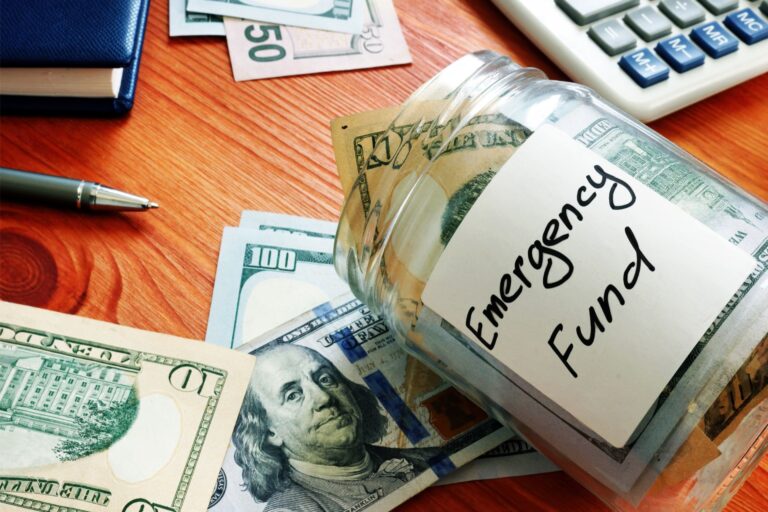
Pop quiz: What happens when your car breaks down, your dog eats something expensive, and your water heater decides to flood your basement all in the same month?
If your answer is “panic and put it all on a credit card,” we need to talk about emergency funds.
Building an emergency fund is one of those financial things to do at the beginning of the year that feels boring until it saves your butt. And trust me, it will save your butt.
Why Emergency Funds Are Non-Negotiable
Life is unpredictable. Shockingly unpredictable sometimes. Your emergency fund is what stands between you and financial disaster when the unexpected happens. And it will happen. Murphy’s Law isn’t just a saying.
Without an emergency fund, every crisis becomes a debt-creating event. Car repair? Credit card. Medical bill? Credit card. Job loss? Hello, high-interest personal loan. Before you know it, you’re drowning in debt because life did what life does.
How Much Should You Actually Save?
The standard advice is 3-6 months of living expenses. But let’s break that down because “living expenses” doesn’t mean your current spending. It means the bare minimum you need to survive: rent, utilities, food, insurance, minimum debt payments.
If you’re single with no dependents and a stable job, maybe 3 months is fine. If you’ve got kids, a mortgage, and you’re the sole income earner? Aim for 6 months or more. If you’re self-employed or work in a volatile industry, consider 9-12 months.
Start with a mini-goal of $1,000 if you’re at zero. That covers most minor emergencies. Then build from there.
Where To Keep Your Emergency Fund
Not in your checking account where you’ll accidentally spend it on impulse purchases. Put it in a high-yield savings account that’s separate from your everyday banking. You want it accessible but not too accessible. Online banks like Ally, Marcus, or Discover usually offer the best rates.
6. Tackle High-Interest Debt Like Your Financial Life Depends On It
Let’s talk about the elephant in the room: debt. Specifically, the high-interest kind that’s bleeding you dry every month. Credit cards charging 20%+ interest, personal loans, payday loans (please tell me you’re not using payday loans).
Making a plan to destroy high-interest debt is one of the most impactful financial things to do at the beginning of the year. Because here’s the truth: you can’t build wealth while you’re paying someone else 25% interest on money you already spent.
The Real Cost Of High-Interest Debt
Let’s do some quick math that’ll probably make you uncomfortable. If you’ve got $5,000 in credit card debt at 22% interest and you’re only paying the minimum (let’s say $150/month), it’ll take you over 4 years to pay off and cost you about $2,000 in interest.
You’re paying $7,000 total for $5,000 worth of stuff you probably don’t even remember buying.
That’s $2,000 that could’ve gone into investments, savings, or literally anything else. High-interest debt is a wealth killer, plain and simple.
Two Proven Debt Payoff Strategies
The Avalanche Method: Attack the debt with the highest interest rate first while paying minimums on everything else. This saves you the most money in interest. It’s mathematically optimal but can feel slow if your highest-interest debt also has the biggest balance.
The Snowball Method: Pay off your smallest debt first, regardless of interest rate. Once it’s gone, roll that payment into the next smallest debt. This method is less efficient mathematically but psychologically powerful. Those quick wins keep you motivated.
Which one’s better? The one you’ll actually stick with. IMO, if you need motivation and have several small debts, go snowball. If you’re disciplined and want to save money, go avalanche.
Boost Your Payoff Speed
Here’s how to accelerate your debt destruction:
- Cut expenses temporarily: Every dollar you free up goes to debt
- Use windfalls wisely: Tax refund, bonus, gift money goes straight to debt
- Negotiate lower rates: Call your credit card companies and ask for a lower APR (it works more often than you’d think)
- Consider a balance transfer: 0% intro APR cards can save you thousands in interest if you’re disciplined
- Increase your income: Side hustle money goes directly to debt payoff
The faster you kill this debt, the faster you can redirect that money toward building wealth instead of paying interest.
7. Define Your Long-Term Financial Goals
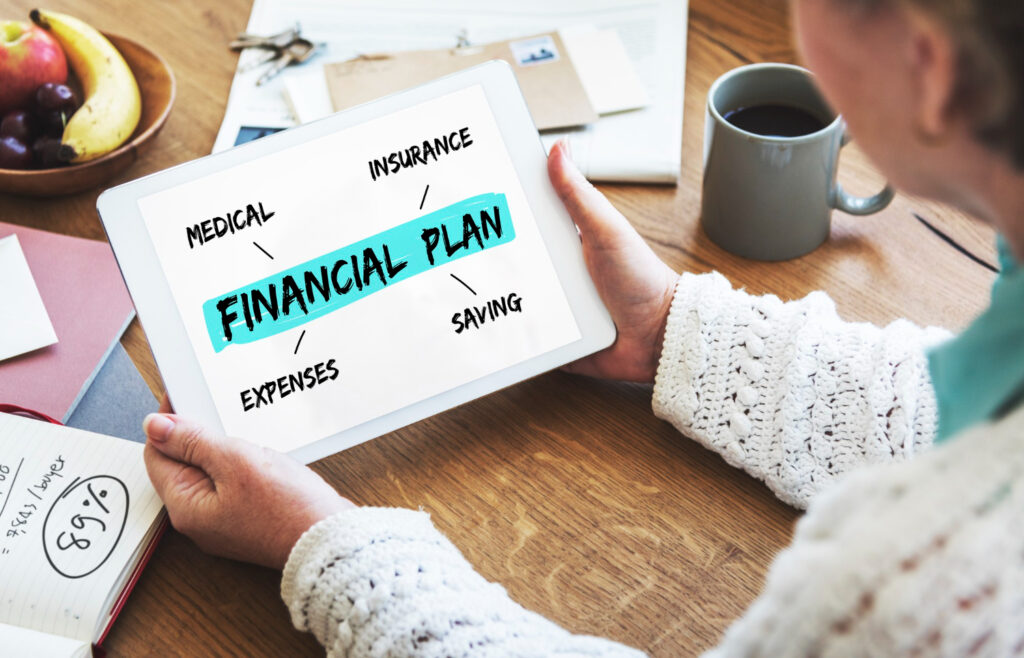
Okay, we’ve talked about immediate actions, but what about the big picture? What do you actually want your financial life to look like in 5, 10, or 20 years?
Defining long-term financial goals is one of those financial things to do at the beginning of the year that separates people who stumble through life financially from people who intentionally build the life they want.
Why Long-Term Goals Matter
Short-term goals are great. They give you quick wins and keep you motivated. But long-term goals? Those are what transform your entire financial trajectory. They’re the difference between retiring at 65 and retiring at 55. Between renting forever and owning property. Between financial stress and financial freedom.
Long-term goals also help you make better decisions today. When you know you’re saving for a house down payment in 3 years, that expensive vacation becomes easier to say no to. When you’re focused on early retirement, maxing out your 401(k) becomes non-negotiable.
What Long-Term Goals Should You Set?
This is personal, but here are some common ones that actually matter:
- Homeownership: Specific target for down payment and timeline
- Debt freedom: Complete elimination of all debt including mortgage
- Retirement number: Specific amount needed to retire comfortably
- Financial independence: Passive income covering all expenses
- College funding: If you’ve got kids, 529 plans and savings targets
- Starting a business: Capital needed and timeline for launch
Make Your Goals Concrete
“I want to be rich” isn’t a goal. It’s a wish. A goal is: “I want to have $50,000 saved for a house down payment by December 2027.” See the difference? Specific amount, specific purpose, specific deadline.
Write your long-term goals down. Break them into yearly milestones. Then break those into monthly actions. Suddenly that massive goal becomes a series of manageable steps.
8. Acquire A New Skill That Pays
Here’s something most people don’t think about when they’re planning their finances: your skills are your most valuable asset. More valuable than your car, your house, or any investment account.
Learning a new marketable skill is one of the smartest financial things to do at the beginning of the year because skills translate directly into earning potential. And unlike physical assets, skills can’t be repossessed, stolen, or destroyed in a market crash.
Why Skills Equal Wealth
Think about the wealthiest self-made people you know or have heard about. They all have valuable skills that other people are willing to pay for. They’re not just lucky (though timing helps). They’ve developed expertise that solves problems or creates value.
When you acquire new skills, especially in-demand ones, you open up income opportunities that didn’t exist before. Maybe that skill lands you a promotion. Maybe it becomes a lucrative side business. Maybe it’s your ticket to a complete career change that doubles your income.
High-Value Skills Worth Learning
Not all skills are created equal financially. Here are some that consistently pay well:
- Digital marketing: SEO, social media management, email marketing
- Video editing: Massive demand with the rise of video content everywhere
- Web development: Even basic skills can land freelance work
- Data analysis: Every company needs people who can make sense of their data
- Copywriting: Good writers who understand sales psychology make bank
- Project management: Organizations always need people who can herd cats effectively
- Public speaking: Opens doors to consulting, training, and leadership roles
Pick something that interests you and has market demand. Then commit to getting good at it. YouTube, Udemy, Skillshare, and Coursera offer affordable (sometimes free) ways to learn almost anything.
9. Diversify Your Accounts (Don’t Put All Your Eggs In One Basket)
Let’s talk about something that sounds boring but is actually super important: where you keep your money. And no, I don’t mean under your mattress (please don’t do that).
Diversifying your financial accounts is one of those financial things to do at the beginning of the year that protects you from various risks while maximizing the benefits of different account types. It’s basic financial hygiene that too many people skip.
Why Account Diversification Matters
Imagine keeping all your money in one checking account. No savings account, no investment accounts, nothing else. What happens if your bank has a security breach? Or the account gets frozen for some reason? Or you accidentally overdraft and get hit with fees?
Plus, different accounts serve different purposes and offer different benefits. Your checking account gives you easy access for daily spending.
Your savings account offers higher interest. Your investment accounts build long-term wealth. Your retirement accounts give you tax advantages.
Essential Accounts You Should Have
Here’s a basic account structure that makes sense for most people:
- Checking account: For everyday transactions and bill payments
- High-yield savings account: For emergency fund and short-term savings goals
- Retirement account: 401(k) through work and/or IRA for tax-advantaged retirement savings
- Taxable investment account: For long-term wealth building beyond retirement accounts
- HSA (if eligible): Triple tax advantage for healthcare expenses
You might also consider separate accounts for specific goals (vacation fund, house down payment, etc.). Some people like having multiple bank accounts to separate different types of spending. Do what works for your brain.
Don’t Forget About Account Benefits
Different institutions offer different perks. Online banks typically offer higher interest rates on savings. Credit unions often have better loan rates. Some checking accounts offer cash back or other rewards. Shop around and take advantage of what each account type offers.
10. Plan And Budget For Year-End Expenses
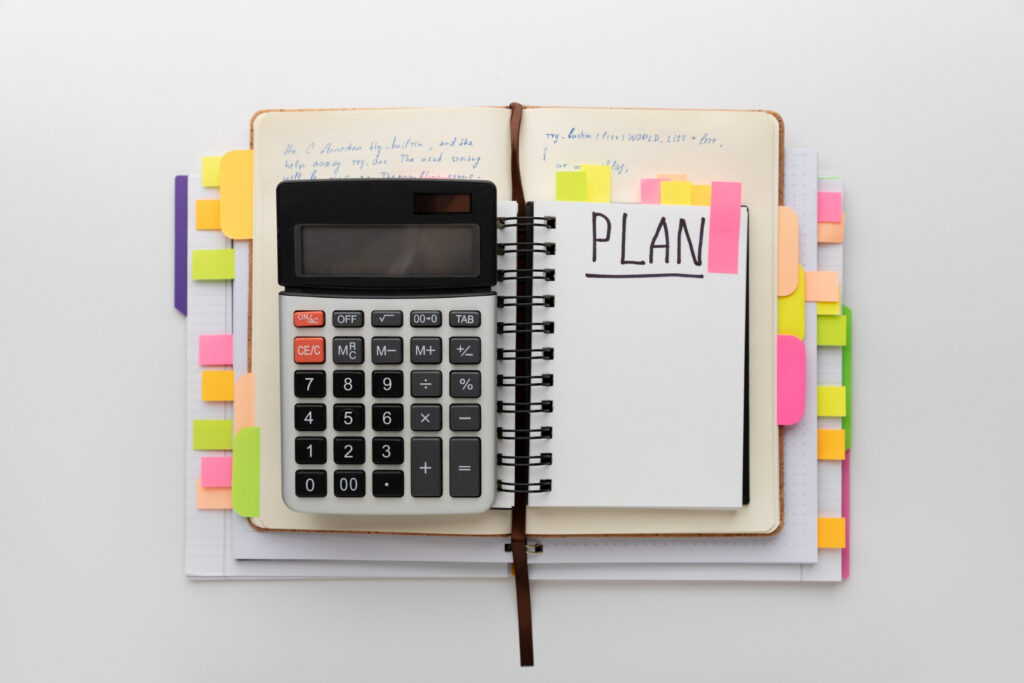
Here’s a scenario that plays out every December: people act shocked that Christmas exists. Like it sneaks up on them. “Oh no, I need to buy gifts and the holidays are expensive!” Newsflash: December happens every year. Same time. Same expenses.
Planning for year-end expenses at the beginning of the year is one of those financial things to do at the beginning of the year that prevents December panic and January credit card regret.
What Year-End Expenses Should You Plan For?
Let’s list the predictable stuff that happens every year:
- Holiday gifts: Family, friends, coworkers, teachers, whoever’s on your list
- Holiday travel: Flights, gas, hotels if you’re visiting family
- Holiday hosting: Food, decorations, supplies if people come to you
- Annual insurance premiums: If you pay yearly instead of monthly
- Property taxes: Often due in December in many areas
- Professional memberships or subscriptions: Many renew in December or January
- Charitable giving: Many people donate at year-end for tax purposes
The Magic Of Monthly Savings
Here’s the strategy: add up all your expected year-end expenses. Let’s say it’s $3,000. Divide by 12. That’s $250 a month. Start setting aside $250 every month starting in January, and by December, you’ve got $3,000 sitting there ready to go. No stress, no debt, no drama.
This is what I call “adulting without the panic.” You’re not scrambling to figure out how to pay for everything in one month. You’ve been preparing all year.
Set up a separate savings account just for this if it helps you keep the money separate. Some banks even let you create sub-accounts or “buckets” within your savings account for different goals.
11. Look After Your Health (Your Wallet Will Thank You)

Okay, this might seem like it doesn’t belong in an article about financial things to do at the beginning of the year, but stick with me. Your health and your wealth are more connected than you think.
The Financial Cost Of Poor Health
Medical bills are one of the leading causes of bankruptcy in the US. Even with insurance, healthcare is expensive. But here’s the thing: preventive care is way cheaper than emergency care. An annual checkup costs way less than treating a condition that’s gotten out of control.
Plus, chronic health issues can affect your ability to work and earn money. They can drain your savings, limit your career options, and generally make everything harder and more expensive.
How Health Affects Your Insurance Costs
Many health insurance plans offer lower premiums for healthy habits. Life insurance definitely costs less when you’re healthy. Some employers offer wellness incentives that put money back in your pocket. Being healthy literally pays.
Simple Health Habits That Protect Your Finances
Eat reasonably well: You don’t need to be perfect, but a decent diet prevents expensive health problems down the road. Plus, cooking at home is cheaper than eating out constantly anyway.
Move your body regularly: Exercise doesn’t require an expensive gym membership. Walking is free. YouTube workout videos are free. Just do something to stay active.
Get enough sleep: Sleep deprivation leads to poor decisions, including financial ones. It also wrecks your health over time, leading to those expensive medical bills we’re trying to avoid.
Go to preventive appointments: Annual physicals, dental cleanings, vision checks. Catch problems early when they’re cheap to fix.
Manage stress: Chronic stress leads to all sorts of health problems. Find healthy ways to deal with it that don’t involve expensive coping mechanisms (retail therapy, anyone?).
FYI, I’m not saying you need to become a health nut. Just take basic care of yourself. Your body and your bank account will both appreciate it.
12. Review And Optimize Your Subscriptions
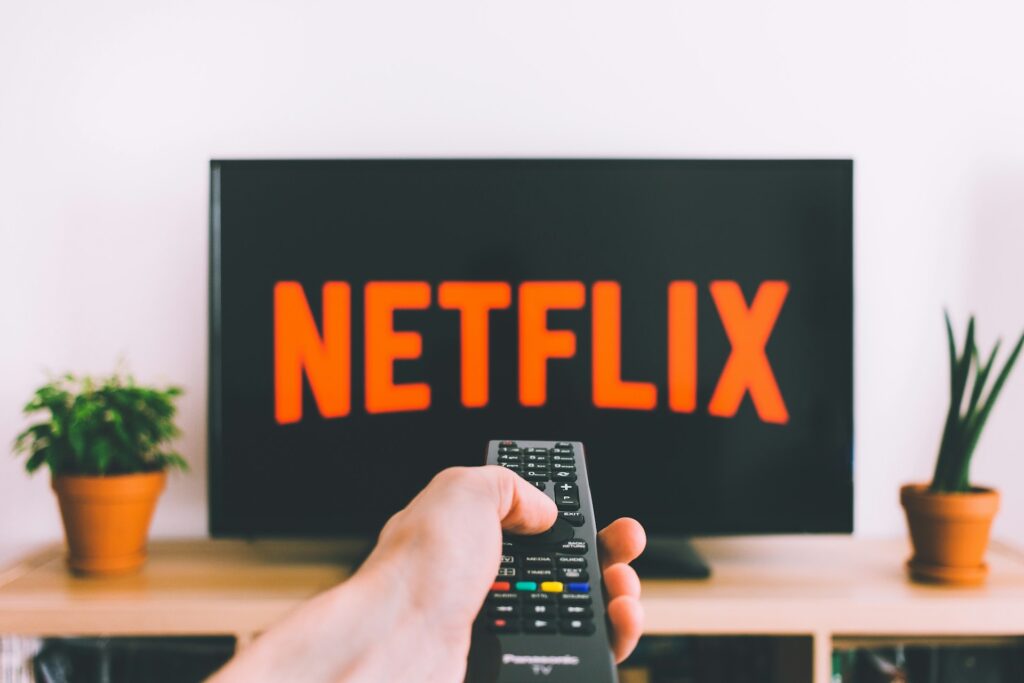
Quick question: how many subscriptions are you currently paying for? No, seriously. Count them. Streaming services, music apps, software subscriptions, gym memberships, meal kits, beauty boxes, app subscriptions on your phone.
Most people are hemorrhaging money on subscriptions they barely use or forgot they had. Reviewing and optimizing your subscriptions is one of those financial things to do at the beginning of the year that can free up hundreds of dollars annually with minimal effort.
The Subscription Creep Problem
Subscriptions are sneaky. They’re usually small amounts that auto-charge, so you don’t really notice them. $9.99 here, $14.99 there, $6.99 for something else. But add them all up and you might be spending $200+ a month on subscriptions.
Companies love subscriptions because people forget to cancel them. That gym membership you haven’t used since February? Still charging you. That free trial you signed up for and forgot about? Now it’s $30 a month.
How To Audit Your Subscriptions
Here’s what to do:
- Check your bank and credit card statements: Go through the last 2-3 months and highlight every recurring charge
- Make a list: Write down every subscription, what it costs, and when you last actually used it
- Be honest: Are you really going to start using that meditation app you’ve ignored for six months?
- Cancel ruthlessly: If you haven’t used it in the last month, cancel it. You can always resubscribe if you actually miss it
- Look for alternatives: Do you really need four streaming services? Can you rotate them instead?
Some apps like Truebill or Rocket Money will track and help you cancel subscriptions automatically. They take a cut of what they save you, but for some people, that’s worth it.
13. Automate Your Finances (Set It And Forget It)
Let’s be honest: relying on willpower and memory to manage your money is a recipe for failure. You’re busy. You forget things. You get tired and make bad decisions.
Automating your finances is one of the smartest financial things to do at the beginning of the year because it removes human error from the equation. You set up the system once, and it runs itself.
What Should You Automate?
Pretty much everything you can:
- Bill payments: Set up autopay for recurring bills so you never miss a payment and tank your credit score
- Savings transfers: Automatic transfer from checking to savings every payday
- Investment contributions: Automatic contributions to retirement and investment accounts
- Debt payments: Automate more than the minimum if possible to pay off debt faster
- Subscription payments: Already automatic, but make sure you’re actually using them (see previous section)
The Psychology Of Automation
Here’s why automation works: you can’t spend money you never see. When your savings and investments come out automatically before you have a chance to spend that money, you adjust your lifestyle around what’s left. It’s painless wealth building.
Plus, automation prevents the “I’ll do it later” trap. How many times have you planned to transfer money to savings and then forgot or spent it instead? Automation eliminates that problem entirely.
Set It Up Right
The key is timing your automations correctly. Set them up to happen right after you get paid, before you have a chance to spend the money. If you get paid on the 1st and 15th, schedule your automatic transfers for the 2nd and 16th.
And yes, you still need to check in occasionally to make sure everything’s running smoothly. But you’re not manually managing everything every month, which frees up mental energy for more important things.
14. Check Your Credit Report And Score
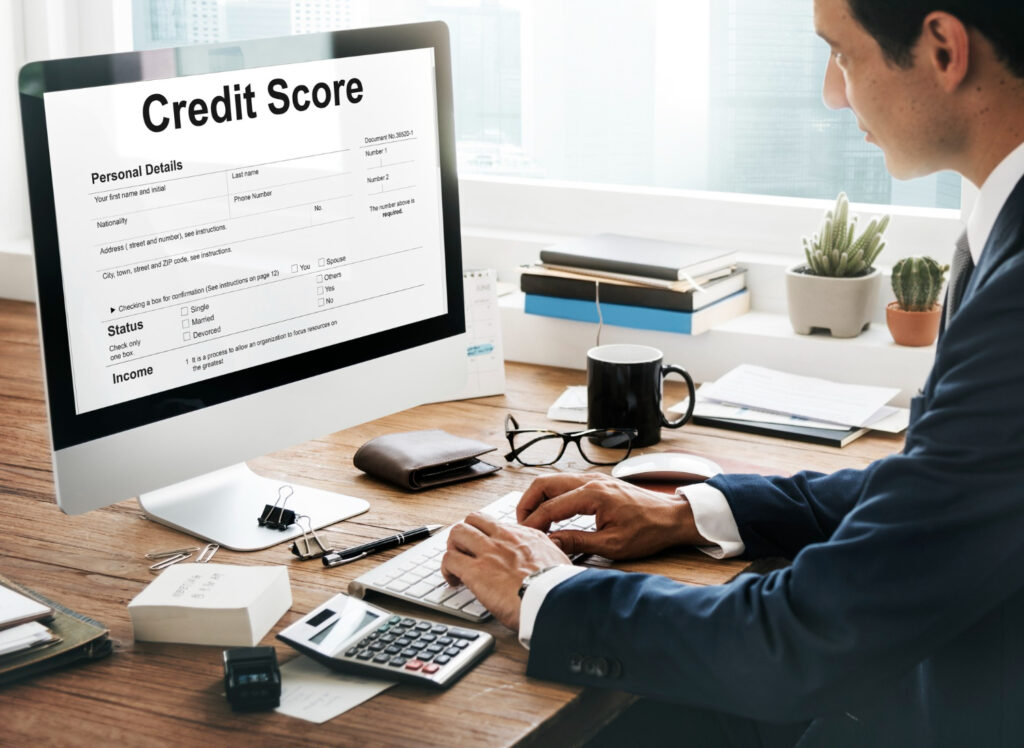
Your credit score is basically your financial reputation in number form. It affects your ability to get loans, the interest rates you pay, sometimes even your job prospects and apartment applications. Yet most people have no idea what their score is or what’s on their credit report.
Checking your credit is one of those financial things to do at the beginning of the year that takes 20 minutes and can save you thousands of dollars.
Why Your Credit Score Matters
Let’s put this in real terms. The difference between a good credit score and a mediocre one on a $300,000 mortgage can cost you tens of thousands of dollars over the life of the loan. On a car loan, it can be thousands. On credit cards, it affects your interest rates and credit limits.
Your credit score also affects things like insurance premiums, security deposits on apartments and utilities, and whether landlords will rent to you. It’s kind of a big deal.
How To Check Your Credit
You’re entitled to a free credit report from each of the three major bureaus (Equifax, Experian, TransUnion) once a year through AnnualCreditReport.com. That’s the official site. Use it.
For your actual credit score, many credit cards now offer free FICO score access. Apps like Credit Karma give you free access to your VantageScore (slightly different scoring model but close enough for monitoring purposes).
What To Look For
When you check your credit report, you’re looking for:
- Errors: Wrong accounts, incorrect balances, accounts that aren’t yours
- Signs of identity theft: Accounts you didn’t open, inquiries you didn’t authorize
- Negative items: Late payments, collections, charge-offs that might be dragging your score down
- Opportunities for improvement: High credit utilization, too many hard inquiries, lack of credit history
If you find errors, dispute them. The bureaus are required to investigate and correct mistakes. This can sometimes boost your score significantly.
15. Reassess Your Insurance Coverage
Insurance is one of those things people set up once and then never think about again. But your life changes, insurance products change, and what made sense five years ago might not make sense now.
Reviewing your insurance coverage is one of those financial things to do at the beginning of the year that can either save you money on premiums or protect you from financial disaster you’re not currently covered for.
What Insurance Should You Review?
Health insurance: If it’s open enrollment season, compare plans. Your health situation might have changed, making a different plan more cost-effective.
Auto insurance: Shop around. Rates change, and loyalty doesn’t pay in insurance. You might save hundreds by switching.
Homeowners or renters insurance: Make sure your coverage reflects your current possessions and property value. Also, check if you’re eligible for discounts you’re not getting.
Life insurance: Do you have enough? Too much? The right type? If your family situation has changed (marriage, kids, divorce), your life insurance needs probably changed too.
Disability insurance: Most people don’t have this and should. If you depend on your income and couldn’t work for an extended period, you’d be in trouble.
The Balance Between Coverage And Cost
You want enough insurance to protect you from financial catastrophe, but you don’t want to overpay for coverage you don’t need. High deductibles lower your premiums but mean more out-of-pocket if something happens. It’s about finding the right balance for your situation.
Also, bundle policies when it makes sense. Many insurers give discounts if you have multiple policies with them. Just make sure the bundled price is actually cheaper than buying separately.
16. Create A “No-Spend” Challenge For Yourself
Okay, hear me out on this one. A no-spend challenge isn’t about deprivation or living like a monk. It’s about resetting your relationship with money and breaking the autopilot spending that drains your bank account.
Doing a no-spend challenge is one of those financial things to do at the beginning of the year that can jumpstart your savings and reveal spending patterns you didn’t know you had.
What Is A No-Spend Challenge?
You pick a timeframe (a week, a month, whatever feels doable) and commit to only spending money on absolute essentials. That means:
- Rent/mortgage: Yes
- Utilities: Yes
- Groceries: Yes
- Gas for work: Yes
- Restaurants: No
- Shopping: No
- Entertainment: No
- Random stuff because you’re bored: Definitely no
Why It Works
A no-spend challenge forces you to get creative. You use what you already have. You find free entertainment. You cook the random stuff in the back of your pantry. You realize how much you normally spend without thinking.
Plus, the money you don’t spend during the challenge can go straight to debt, savings, or whatever financial goal you’re working on. Even a one-week challenge can free up $100-200 for most people.
Making It Sustainable
The point isn’t to white-knuckle your way through and then binge-spend when it’s over. The point is to identify and break unconscious spending habits. After the challenge, you’ll probably find you don’t miss some of the things you used to spend money on regularly.
Start small if you need to. A no-spend weekend. Then a week. Work your way up to longer periods. The key is making it a learning experience, not a punishment.
Final Thoughts
Look, I get it. This list is long. You’re probably feeling a bit overwhelmed right now, wondering how you’re supposed to do all of this while also, you know, living your life.
Here’s the thing: you don’t have to do everything at once. Pick three things from this list that resonate with you. Start there. Master those. Then add more.
The financial things to do at the beginning of the year aren’t about perfection. They’re about progress. They’re about setting yourself up so that December-you looks back and thinks, “Damn, I actually did that. My money situation is so much better than it was in January.”
Every single action on this list is something I’ve either done myself or watched other people use to transform their finances. None of it is theoretical. None of it requires you to be a finance genius. It just requires you to be intentional.
So here’s my challenge to you: pick one thing from this list today. Not tomorrow. Not Monday. Today. Do that one thing. Then tomorrow, do the next thing. Build momentum. Before you know it, you’ll have completely changed your financial trajectory.
Your future self is watching. Make them proud.








